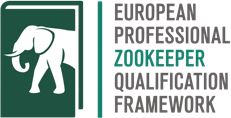Unlike portfolios professional development plans record the competencies a keeper would like to or is required to develop, so they are more focused on the future and not on the competencies a keeper has already demonstrated. In some organisations a professional development plan will be completed annually, often linked to a performance appraisal where future aspirations and skill deficits may be discussed. However, keepers can also maintain their own professional development plans as a way of thinking through more systematically how they will develop the skills and experience they need to achieve their future career aspirations.
There are many different ways to complete a professional development review – the process which leads to the creation of a professional development plan. One way is to follow these steps:
- If the review is being conducted between a keeper and a manager, it is important that uninterrupted time is allocated and that both parties are able to prepare. How long the meeting should be will really depend on how many competencies are to be discussed, but 1 – 2 hours is normally sufficient. Both the manager and the keeper should be aware of the purpose of the meeting in advance so that they are able to prepare.
- The review may start with mapping out the tasks that are involved either in the keeper’s current role or the role they aspire to do and then assessing whether the keeper has the competencies required to do the tasks. Where managers and keepers work together all the time and the focus is on the current role this can be quite a quick process. It can also speed things up if this is done in advance of a meeting.
- From the list of competencies the keeper needs to improve or develop, the manager and keeper should decide which are most important. This might be based on how critical they are to the role the keeper currently has or on whether they will be expected to complete particular projects or activities that will require those competencies in the coming months. If the keeper is making their own professional development plan they may be more focused on developing the competencies that are needed for a job role they would particularly like to do in the future. In this case it is important to find out exactly what is involved in that job and what that employer will be looking for.
- For each competency decide how the keeper can go about developing it. This might include formal training, but may also include mentoring, observing best practice, study visits to other organisations, self-directed study and much more. Many of the methods for developing competencies do not need to cost anything.
- To ensure that progress can be monitored easily, deadlines for completion and how the competency will be monitored should also be included. Monitoring might include regular reviews with the line manager, achieving a particular qualification or the completion of a particular project where the competency would be demonstrated.
- A formal review where the entire process will be reviewed should also be agreed upon.
You can download a template for a professional development plan with some example content here [link will be added shortly].
